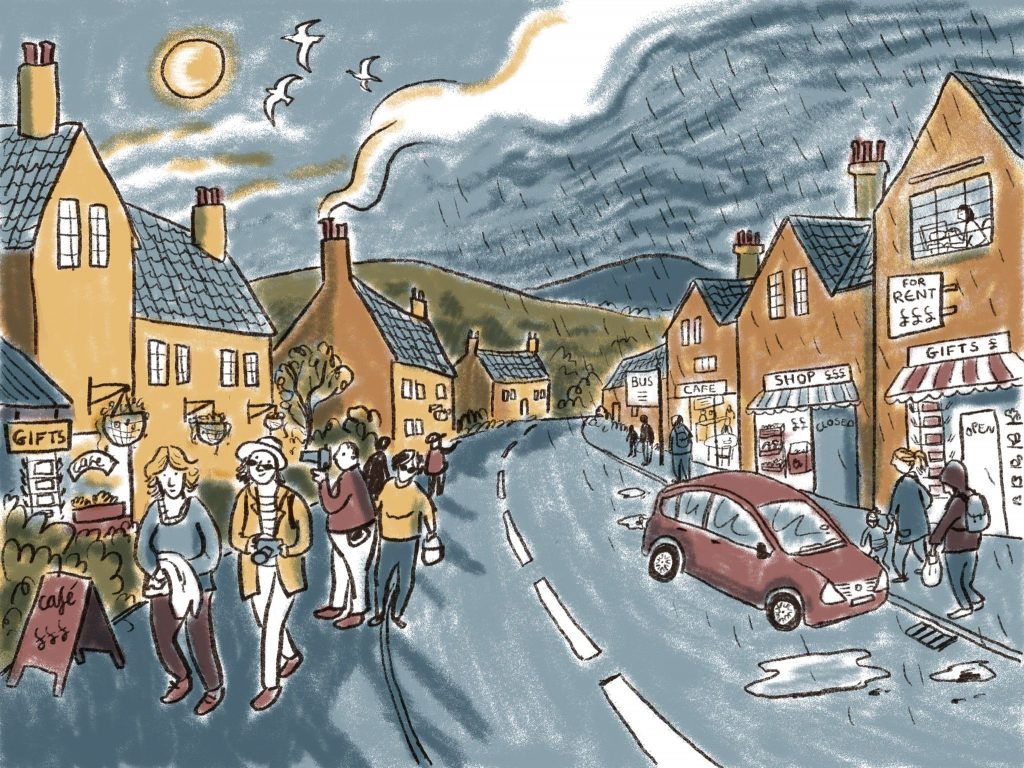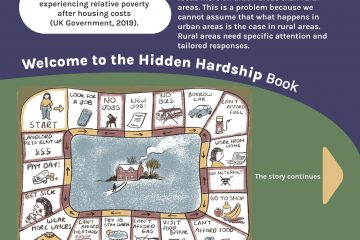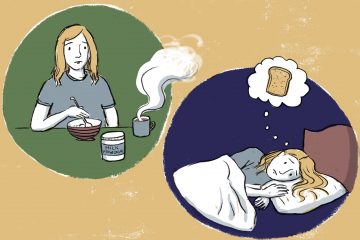The Hidden Hardship research is now in the fieldwork stage – I’m out and about in the North Cotswolds gathering ‘data’: meeting local people who are experiencing hardship, responding to hardship, and often both of these together. This has involved spending time at gatherings including a local foodbank, at a job club, community meals, and later this week at a toddler group. I’ve been taking part in the different gatherings that I’ve visited, chatting to local people, and also doing more structured interviews.
All of this is with the aim of understanding hardship in the rural North Cotswolds – how people experience hardship, navigate hardship, and how they encounter barriers to better well-being.
One thing that has struck me so far is the inequality – how we can each experience the same place differently.

The above image by Beth Waters (an illustrator who I’m working with throughout the hidden hardship research) portrays inequality in the North Cotswolds: the wealth experienced by some (and perceived by many), the tourism with gift shops and expensive cafés, and the high rent, reliance upon owning and running a car, and inadequate public transport experienced by other locals.
This means that experiences of being and living in the North Cotswolds can be quite different depending on your circumstances. For example, public transport is limited, expensive, and takes much longer to get from A to B than by driving in your own car. If a household does not have a private car – or ideally one car per adult in rural areas for getting around independently – then job opportunities are limited (which are often seasonal to start with), child care options are limited, shopping is done at supermarkets in walking distance which are not necessarily the cheapest stores, and overall a person’s choices are limited. These are things that others take for granted. Whilst this is also true for other areas, in rural areas these problems can be exacerbated because of the isolation that results when people cannot travel to and access different areas and amenities. The North Cotswolds is certainly a beautiful part of the country to live in, but nonetheless challenging.
Want to know more? Subscribe receive further blog post updates (by filling in the form on the right hand side of this page) for reflections, resources, and events on rural hidden hardship over the next 12 months.


